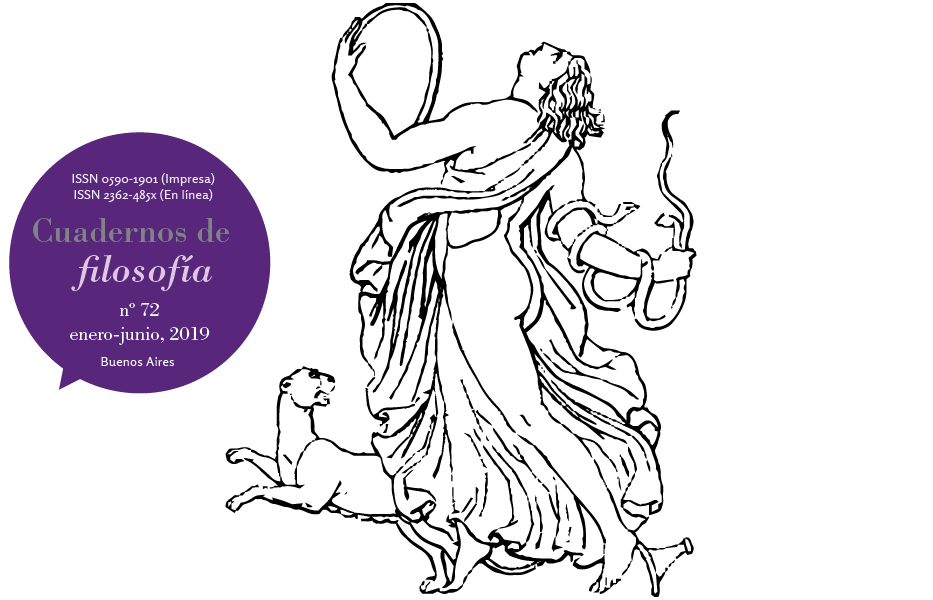The body of the image and madness in Aby Warbug. A reflection from Renaissance sources
Abstract
The following article intends to inquire into the conceptual framework according to which Aby Warburg interpreted both Sandro Botticelli’s Birth of Venus and Primavera. On one hand, we propose an analysis of the role played by the poetry of the dolce stil nuovo and neoplatonism as a means of tackling the warburguian understanding of Botticelli’s allegories. On the other hand, we try to grasp the philosophical meaning of Warburg’s hypotheses by studying Marsilio Ficino’s commentary to Guido Calvacanti’s poem Donna me prega. Ficino’s interpretation is founded on the notion of spiritus and the desubjectification of the lovers in favour of the cosmological forces. In this way, the foreclosure of the body is presented as the condition of possibility for the phantasm to become the authentic object of desire. This interpretation is sanctioned by Ficino’s original appropriation of the Platonic theory of the two Venuses (celestial and vulgar). Finally, we advance the hypothesis that the splitting between the two Venuses in the neoplatonic tradition is a landmark in the history of metaphysics and plays a fundamental role in the way that Warburg will understand his own period of psychiatric reclusion in Kreuzlingen since 1921 to 1924.Downloads
Los autores/as que publiquen en esta revista aceptan las siguientes condiciones:
Los/as autores/as [traductores/as] conservan los derechos de autor/a y ceden a la revista el derecho de la primera publicación, con el trabajo registrado con Licencia Creative Commons Atribución-NoComercial-CompartirIgual 4.0 Internacional, que permite a terceros utilizar lo publicado siempre que mencionen la autoría del trabajo y a la primera publicación en esta revista.
Los/as autores/as pueden realizar otros acuerdos contractuales independientes y adicionales para la distribución no exclusiva de la versión del artículo publicado en esta revista (p. ej., incluirlo en un repositorio institucional o publicarlo en un libro) siempre que indiquen claramente que el trabajo se publicó por primera vez en esta revista.
Se permite y recomienda a los/as autores/as a publicar su trabajo en Internet (por ejemplo en páginas institucionales o personales).
Políticas de detección de plagio
La colaboración de los y las editores/as, autores/as y evaluadores/as de esta revista y la guía de ética de los procesos editoriales se rige por los Principios de transparencia y buena práctica en publicaciones académicas del Committee on Publication Ethics (COPE) disponible aquí.
Todos los artículos enviados a esta publicación serán supervisados mediante una búsqueda online.







